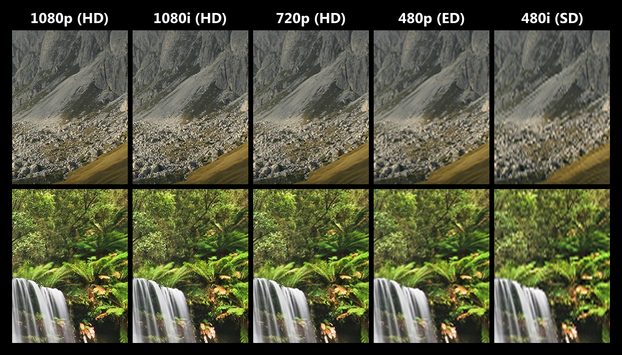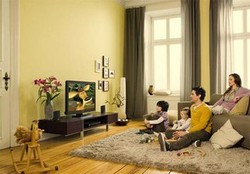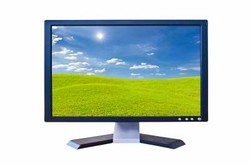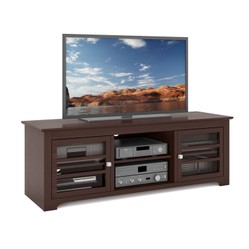The main difference between HD televisions and conventional television sets is that they are able to recreate pictures at higher resolutions. In other words, they have more pixels at their disposal. These pixels if compared to those available on regular or should I say a standard definition set with the same dimensions are a lot smaller. The end result is a sharper and more realistic looking picture with less space between pixels.

720p Vs 1080p HD TVs: When Full HD Is Worth It
by QuantumLouie
Learn about HD resolutions and how screen size and sitting distance affect your perception of the quality of the picture.
Hype Or No Hype?
One of the problems of this market is that many consumers do not really understand when it is better to buy a product with a higher resolution and when it would be reasonable to buy one that is not a top of the line product in terms of resolutions and specs but would be a better bang for the buck.
According to statistics on many websites on high definition, many consumers cannot tell the difference between a picture created using a 720p and a 1080p resolution also known as “Full HD”. Hype often leads to compulsive shopping and this is one of the reasons why so many people end up spending on HDTV sets that have a higher resolutions even if they can't really see no improvement. The difference in money that a person could save by choosing a set with lower specs could be used to buy a Blu-Ray player or any other gadget to complement a newly purchased TV.
 |
Looking For a Brand New HD TV?
How come many people do not see this difference while others do?
The answer to this question is a very simple one. It is very difficult to see improvements when changing from a 720p resolution to 1080p if the screen is small or medium sized. For example, when you change from 720p to 1080p most people won't see too much of a difference on a set that has a screen smaller than 36 inches. Some people don't even notice a change that is worth paying more even if the screen measures more than 43 inches but this is more of a personal choice.This is nothing new. The debate between people who can and cannot see a difference still lives after many years in some tech forums as well as if paying more for 1080p is worth the money or not.
The problem is that our eyes have their limits. On smaller screens, the pixels are small enough at 720p to be almost unnoticeable when isolated. If you set up your screen to display only one black pixel on a completely white background using a 32 inch screen it will a little difficult to spot the pixel at more than ten feet. If you do the same experiment using a larger HD television, say a 48 inch one where the pixels are larger, you can spot the black dot with relative ease. If switch the resolution to 1080p then the pixel becomes difficult to spot again.
Remember that the other important factor to consider is sitting distance. The farther from the TV a person is, the more likely the person won't see any improvement unless the unit is large enough. When a person sits close, the difference between resolutions is obvious even if the screen is small. Take where the unit will be placed relative to where you will be sitting into consideration before making a purchase.
The Image on this page is licensed under the Creative Commons Attribution-Share Alike 3.0 Unported license. Image By: GraYoshi2x, Noodle snacks, Frisia Orientalis
You might also like
HDTV Buying GuideThere are different brands of HDTVs in the market. Because it is an investmen...
Best HD TV Setup: The Essential Add OnsPlugging your high definition television to your old stuff won't do. Learn wh...
Best TV Deals for ChristmasThe idiot box became the poor cousin due to internet during the past 2 Decade...









 Metal Gothic Bracelets: Silver, Pewter And Steel Bracelets For Gothson 11/13/2012
Metal Gothic Bracelets: Silver, Pewter And Steel Bracelets For Gothson 11/13/2012
 Beat The Market With The Best Investment Bookson 10/15/2012
Beat The Market With The Best Investment Bookson 10/15/2012
 Investing In REITs: Profiting From Real Estateon 04/17/2012
Investing In REITs: Profiting From Real Estateon 04/17/2012
 Investing Options For Retireeson 04/13/2012
Investing Options For Retireeson 04/13/2012




Comments
@2esday Great! As long as you are happy with your new set everything is fine. What worries me is that many consumers end up going over budget because a seller failed to inform them properly.
For example, a seller sells an expensive product to a customer and doesn't tell them that they need a Blu-ray player or any source of HD signals. The consumer goes home and notices that everything looks the same not knowing that they need HD sources such as HD channels or a Blu-ray player to notice any difference. This happens a lot because there are a lot of sells men that get commissions from sells they close. So they try to sell people the most expensive items without actually helping customers. I would explain customers the differences between 720p and 1080p, the importance of HD sources and give them valuable shopping advice that would save them money at the end of the day. Money they could use to buy other accessories for their new television set.
@katiem2 Buying a new Tv is not what it used to be. I remember the days when you could just buy the first one that caught your attention and everything turned out perfect. Everything changed with the arrival of high definition. Now it can be as confusing as buying a new computer because they perform differently from model to model.
Some products have short lifespans while the picture quality on others bad enough. CRT televisions were fool proof for shoppers. Their lifespans are long and most of them offered the same picture quality. Just be careful if you choose a set with an LCD screen. Avoid strange brands that sell cheap products like the plague. If you go for a budget set stick to well known brands like Sony, Samsung, Panasonic even if their budget products are more expensive than budget sets from those brands that pop up out of nowhere. Thanks for Visiting K! =)
I've been thinking about getting a new tv, my sharp is 8 years old and out dated per the amazing advancements in technology. It's just so overwhelming to choose as the television selections are vast and salespeople biased and can be a bit pushy. Thanks for the heads up on HD TV's this is very helpful. :)K
Hi terry thanks for reading and commenting! It depends a lot on the person. ;)
I have a 50 inch 1080p and my parents have a 47 inch 720p and I cant tell the difference between the 2 of them, my wife can tho.